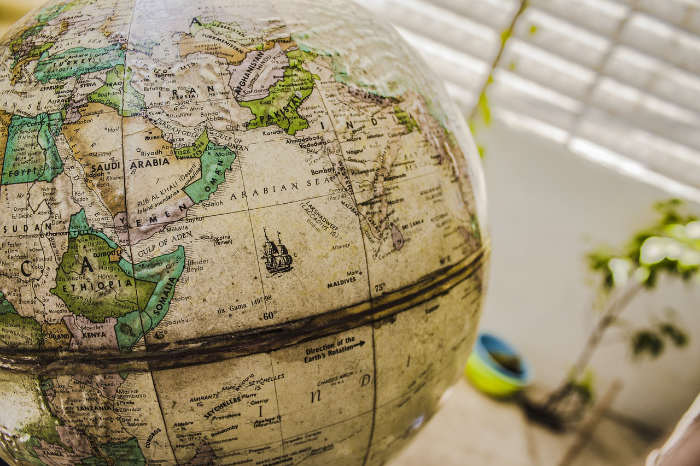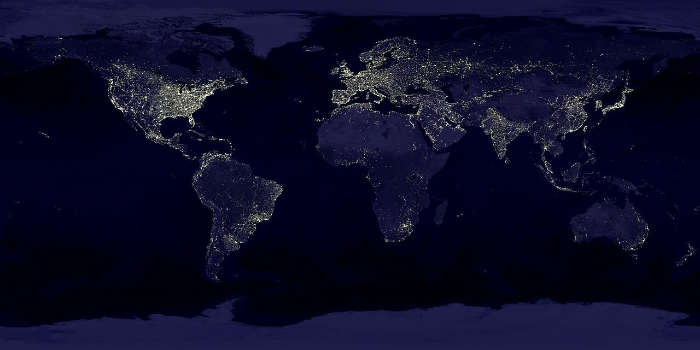Religious People by Country 2025

0
200M
400M
600M
800M
1B
1.2B
1.4B
1.6B
5 Countries with the Most Religious People
- Totals of fewer than 10,000 individuals are represented by the placeholder value 5,000.
- Total percentages less than 1% are represented by the placeholder value 0.5%.
Snapshot
-
Christianity, with about 2.38 billion followers, is the world's largest religion, deeply diversified into numerous denominations like Catholicism, Protestantism, and Eastern Orthodoxy.
-
Islam, followed by over 1.91 billion people, is the second-largest religion and is expected to nearly match Christianity's following by 2050.
-
A significant number of people, nearly 1.2 billion worldwide, are unaffiliated with any religion or hold Atheist beliefs, especially in China and Japan.
A religion is a system of faith or worship that influences the way a person thinks about, views, and interacts with the world. A person’s religion is often the main source of their ethical and moral beliefs. For many believers, religion is a source of great comfort, perhaps even purpose. Many different religions exist throughout the world. Although religions are often very different from one another in theology and practice, it is arguable that most of them focus upon two near-universal themes: How to behave here on Earth, and what to expect when we die. Most religions teach faith in a higher power, be it one’s own spirituality, nature, the God/YHWH/Allah of Christians, Jews, and Muslims, or the Hindu deities Vishnu, Shiva, Ganesha, Shakti, and Surya.
How Many Religions Exist in the World
Determining the exact number of religions worldwide is a daunting, if not impossible task, and for many reasons. Many religions can be difficult to tell apart for those not intimately familiar with their doctrine. Even more importantly, guidelines about what is a truly separate religion and what is simply a denomination (subdivision) are rare, if not nonexistent. To use Christianity as an illustration, the practices and beliefs of a traditional Mennonite church differ greatly from those of a modern Vineyard or Assembly of God church, but both are still considered part of the Christian religion. Conversely, Sikhism is generally considered to be its own unique religion despite claims that the religion is historically rooted in Hinduism.
On a similar, but arguably smaller-scale note, the line between a spiritual, but non-religious experience and an actual religion can be different from person to person—for example, New Age practices, Wicca, and even certain forms of yoga can be considered a religion by some, but not to others. One popular estimate claims there exist some 4000-4300 religions worldwide, but this number is highly disputed. First off, it includes extinct belief systems which are no longer practiced today. Moreover, it counts each of the various denominations in a given religion separately—so Christianity, for example, would not count as one religion, but hundreds: Protestant, Catholic, Lutheran, Methodist, Episcopalian, Assembly of God, Seventh Day Adventist, Mormon, and so on.
World Population by Religion
About 85% of the world’s people identify with a religion. The most popular religion is Christianity, followed by an estimated 2.38 billion people worldwide. Islam, which is practiced by more than 1.91 billion people, is second. However, population researchers predict that Islam will have nearly caught up to Christianity by 2050. Other religions measured and projected include Hinduism, Buddhism, Judaism, adn two umbrella categories. The first is “folk religions”, which collects traditional African religions, Chinese folk religions, and both Native American and Australian aboriginal religions. The second is “other religions”, a catch-all that tracks smaller faiths such as Shintoism, Taoism, Sikhism, and Jainism. Finally, a significant number of people—nearly 1.2 billion worldwide—remain nonreligious or have Atheist beliefs.
Below is each religion’s total estimated population for 2020:
- Christianity - 2.38 billion
- Islam - 1.91 billion
- Hinduism - 1.16 billion
- Buddhism - 507 million
- Folk Religions - 430 million
- Other Religions - 61 million
- Judaism - 14.6 million
- Unaffiliated - 1.19 billion
Christianity
The world’s largest religion is Christianity, which is practiced by almost 2.4 billion people. Christianity is divided into Eastern and Western theology, and within those divisions, many branches, including Catholicism, Protestantism, and Eastern Orthodoxy. Those branches further divide into the thousands of various denominations known today, including Baptists, Methodists, Lutherans, Seventh-Day Adventists, Mormons, Amish, and more.
In Vatican City and the Pitcairn Islands, 100% of the population is Christian. In several other nations, at least 93% of the population is Christian. Countries whose populations are at least 93% Christian: Vatican City, Pitcairn Islands, American Samoa, Armenia, Barbados, East Timor, El Salvador, Greece, Kiribati, Malta, Marshall Islands, Micronesia, Papua New Guinea, Paraguay, Peru, Romania, Samoa, San Marino, Tonga, and Venezuela.
Islam
Islam is the world’s second-largest religion. People that practice Islam are known as Muslims. In the Maldives, Mauritania, and Saudi Arabia, 100% of inhabitants practice Islam. In many nations, at least 95% of inhabitants identify as either Sunni or Shi’a Muslim. Countries whose populations are at least 95% Muslim: Maldices, Mauritania, Saudi Arabia, Afghanistan, Algeria, Comoros, Iran, Iraq, Kuwait, Libya, Morocco, Pakistan, Somalia, Sudan, Tunisia, Turkey, and Yemen. There are 50 Muslim-majority countries worldwide.
Hinduism
Hinduism is the third-largest religion globally. Hinduism is considered dharma, or way of life. It originated on the Indian subcontinent and is widely practiced throughout Southeast Asia. The four main denominations are Vaishnavism, Shaivism, Shaktism, and Smartism. Unsurprisingly, India has the largest Hindu population but not the highest percentage of Hindus. There are an estimated 1.093 billion Hindus in India, about 79.8% of the population. Nepal has the second-highest Hindu population at 28.6, an estimated 81.3% of the population. Countries with a large number of Hindus: India, Nepal, Bangladesh, Indonesia, Pakistan, Sri Lanka, United States, Malaysia, United Kingdom, and Mauritius.
Buddhism
Buddhism also originated in India and is based on the teachings of Buddha. Buddhists have unique traditions, values, and beliefs, such as reincarnation. About 507 million people practice Buddhism worldwide. China has the largest Buddhist population with 254.7 million, followed by Thailand at 66.1 million, Burma (Myanmar) with 41.44 million, and Japan with 41.38 million. Cambodia has the highest percentage of Buddhists at 97.9%, followed by Thailand at 94.6% and Burma (Myanmar) with 87.9%. Countries with the highest percentage of Buddhists: Cambodia, Thailand, Burma/Myanmar, Sri Lanka, Laos, Mongolia, and Bhutan.
Other Religions
In some nations, traditional Chinese religions, including Confucianism and Taoism, are practiced. This is most frequently seen in the following nations: China, Hong Kong, Macau, and Taiwan. Ethic and indigenous religions are practiced in many countries. In Guinea-Bissau and Haiti, an estimated 50% of the population follows one of these religions. Other nations where ethnic and indigenous religions are practiced include Guinea-Bissau, Haiti, Benin, Burundi, Cameroon, Cote d’Ivoire, Sudan, and Togo.
Unaffiliated or Atheist
Finally, as mentioned, many people are non-religious or atheist. This is mostly seen in nations including Estonia, Czechia, China, and Japan, where over three-quarters of the population declines to practice a religion. Countries with a high percentage of unaffiliated/atheist citizens: China, Estonia, Czechia, Japan, Denmark, France, Hong Kong, Macau, Norway, Sweden, and Vietnam.
























